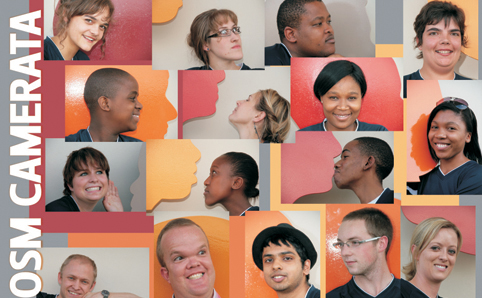 |
|
The OSM Camerata is going to shine in the very first annual OSM opening concert.
1 March 2012
|
OSM opening concert 2012 with the OSM Camerata
Conductor: Nicholas Nikolaidis
Date: 1 March 2012
Venue: Odeion
Time: 19:30
The OSM opening concert 2012 with the OSM CAMERATA will be streamed live on the internet with the generous support of OSM partner, LA MUSE AUDIO & LIGHTING (www.ufs.ac.za/ufslivestreaming) in collaboration with the UFS LIVE STREAMING UNIT.
The OSM Camerata is going to shine in the very first annual OSM opening concert. The ensemble will be conducted by Nicholas Nikolaidis. The programme includes excerpts from Stabat Mater (Pergolesi), Romanian Folk Dances (Bartók), Pelimannit (Rautavaara), Elegy (Grové) and Purple Haze (Hendrix). since 2011, the Odeion School of Music has embarked on a new, innovative strategy striving towards uncompromising excellence and internationalisation, which includes the A-List scholarship programme and a new flagship chamber ensemble, the OSM Camerata. Talented South African, conductor/tenor Nicholas Nicolaidis, (runner-up in the First National Len van Zyl Orchestral Conducting Competition) will take the stage for the inaugural concert of the OSM.
Nicholas started his conducting career at an early age while still in the Drakensberg Boys’ Choir School. Professionally his first conducting post was as choirmaster and conductor of the choir and band at Pridwin Preparatory School (Melrose, Johannesburg) in 1996.
Following his appointment in April 1997 as the Musical Director of Côr Meibion Cymru de Affrig (The Welsh Male Voice Choir of South Africa), he conducted the choir for seven years, producing three albums. One of the highlights was the performance at the Royal Albert Hall in London in October 2000 for the Millennium Festival of Male Voice Choirs.
His orchestral conducting debut was in 1998 at the Johannesburg City Hall where he conducted the Johannesburg Festival Orchestra and the Symphony Choir of Johannesburg in a few items of ‘Last Night of the Proms’. Selected conducting performances include the Chanticleer Singers in a performance of Schubert’s Mass in G at the Holy Trinity Church (Braamfontein, Johannesburg) in 2002, and the Johannesburg Camerata, a chamber orchestra consisting of talented young performers, during their winter season in 2005.
In 2006, Nicholas enrolled at Stellenbosch University for a Master’s degree in Choral Conducting under the direction of the Norwegian pedagogue, Kåre Hanken. During this time, he also conducted the Johannesburg-based chamber choir, Collegium Vocale. He conducted the Johannesburg Chamber Wind Ensemble from 2006 to 2008.
In 2009, he conducted the Johannesburg Festival Orchestra in a programme of music by Leroy Anderson, the vocal ensemble, In Verse, and the Chanticleer Singers during their Christmas season. Nicholas was also the winner of the inaugural Young Choral Conductors Competition held during the Stellenbosch International Choral Conducting Symposium in March 2009.
In February 2010, he was awarded the Silver Medal in the inaugural Len van Zyl Conducting Competition held in conjunction with the Cape Philharmonic Orchestra. During the Easter period of 2010 he conducted Cantamus Corde in a performance of JS Bach’s St John’s Passion, whilst also singing the role of the Evangelist.
Nicholas has also appeared as guest conductor of the Philharmonia Choir of Cape Town in a concert with music by Ramirez and Klatzow. In that year he also conducted the gala Concert of the Brooklyn Theatre (Pretoria).
Refreshments will be on sale before and after the concert.
Admission:
R60 (adults)
R40 (pensioners, students and learners)
Tickets available at Computicket.
Enquiries:
Ninette Pretorius (Tel: +27(0)51 401 2504)